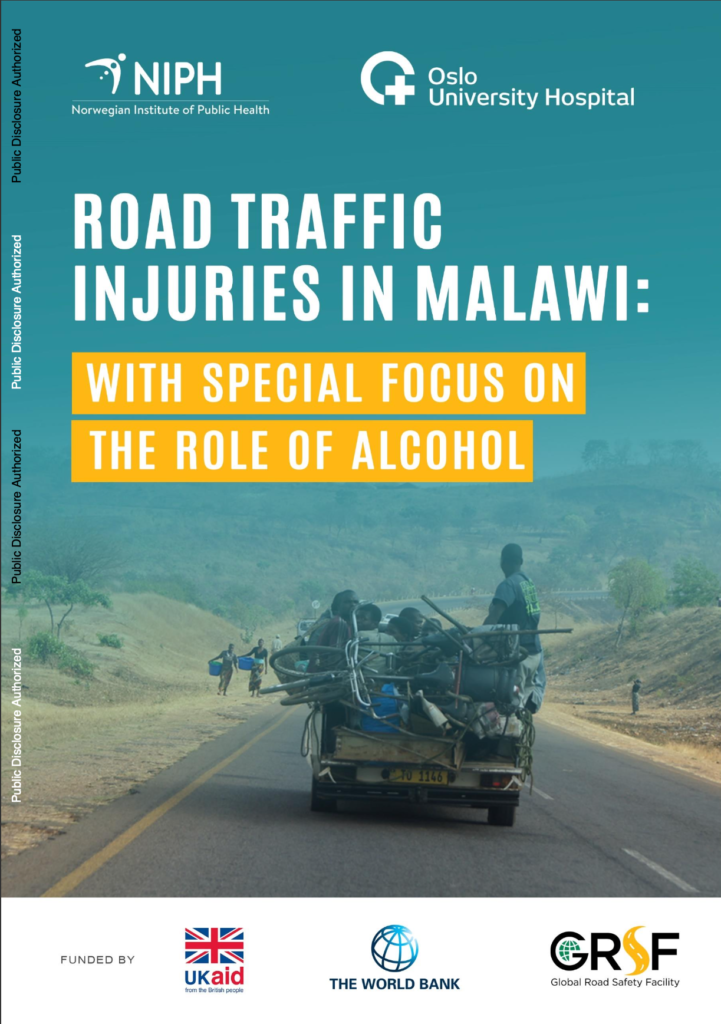Driving under the influence of alcohol is one of the main reasons for road traffic accidents. Alcohol is also a risk for other people who use roads such as pedestrians and bicyclists.
The United Nations declared the Decade of Action for Road Safety during the period 2011-2020. The aim of the decade was to halve the number of road traffic deaths by 2020. Unfortunately in low and middle income countries (LMIC) the number of fatal road traffic crashes have increased. LMIC’s own about 60% of the world’s motor vehicles but face a disproportionate burden of 90% of the global road traffic accidents.
While alcohol’s involvement in road traffic crashes is better documented in high income countries data is scarce in LMICs, specifically in the African region. Therefore, a study was conducted in Malawi by the Kamuzu Central Hospital (KCH), the Norwegian Institute of Public Health (NIPH) and the Oslo University Hospital (OUH), with the financial support of UK Aid through the Global Road Safety Facility (GRSF), the International Council on Alcohol Drugs and Traffic Safety (ICADTS) and the Norwegian Council for Road Safety (Trygg Trafikk).
The objective of the study was to,
- Generate new knowledge about road traffic injuries in Malawi and the extent of traffic accidents related to alcohol use,
- Increase capacity to conduct alcohol-testing, and
- Develop a database for the findings, which in turn will form the basis for future policymaking to reduce traffic accidents.
The data was collected on patients who sought treatment after road traffic crashes and admitted to the Emergency Department at Kamuzu Central Hospital in Lilongwe, Malawi.
Key results of the study
Out of 1251 patients admitted to the emergency department of Kamuzu Central Hospital after a road traffic accident,
- Alcohol prevalence was 30.7% among males.
- 9.2% of the cases affected women but women’s alcohol prevalence was only 2.5%. This indicates the disproportionate harm on women from alcohol fueled road traffic accidents.
- An estimated proportion of 15.2% of the injured motor vehicle drivers had BAC at or above the legal limit of 0.08g/dl when the crash occurred.
- At-risk alcohol use as measured by the AUDIT-C indicated 26% of the men had risky alcohol use versus 4.2% of the women. Younger people between 25 to 34 years had the highest risk of having at-risk alcohol use (26%).
- In terms of age, those in the 25 to 44 years age group had the highest alcohol prevalence of 26-27%.
- In terms of socioeconomic status, those who did not have formal education had higher alcohol prevalence of 33.3% compared to those who had college or university education (22.1%).
- Alcohol prevalence was highest among those who were injured during weekend night crashes (59.6%), followed by those injured during weekend evenings (36.8%) and weekday nights (35.3%).
